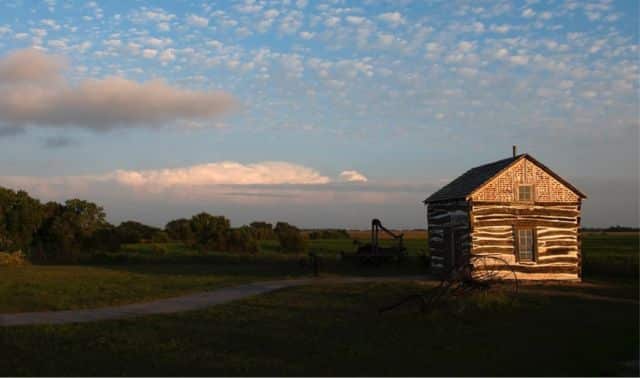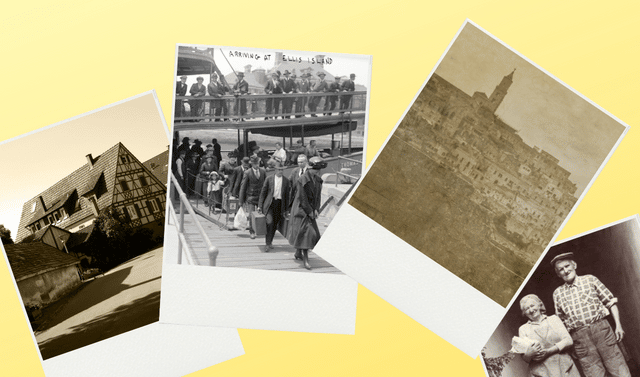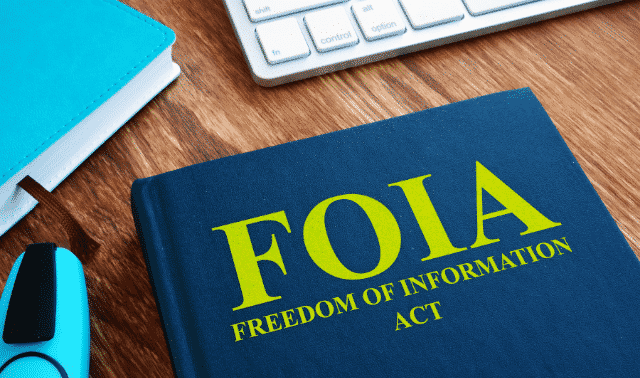
You may sometimes feel like your genealogical research needs a hero’s help: You visit the same census returns and birth certificate indexes over and over again, only to come up empty-handed. Underdog himself may be unavailable, but these 19 research “underdogs” – genealogy’s most underused, overlooked resources – may be the superheroes that revitalize your family quest.
1. Letters and journals
Hunt through the house for letters tucked inside the family Bible, Great-grandma’s jewelry box and old jacket pockets; squirreled away in the backs of desk drawers and safety deposit boxes; and hidden behind photos or documents in picture frames. Examine envelopes for return addresses, postmarks and towns of origin in your ancestral homeland. Diaries and journals weren’t always in traditional labeled books – perhaps your relative recorded his thoughts in a small, unassuming note pad or address book. In case a distant cousin published a relative’s diary, see Laura Arksey’s American Diaries: An Annotated Bibliography of Published American Diaries and Journals (Gale Group).
2. Memorial cards
Not everyone was memorialized in an obituary or death notice, but funeral and memorial cards can fill in the blanks. Early cards were 4×6 inches and included the deceased’s birth and death dates, the funeral home name (and possibly address), a Bible verse and funerary symbolism. A later memorial card might bear a photo of the deceased. Modern cards are smaller, printed in color, and sometimes laminated, but contain much of the same information.
A few years ago, I found more than 250 memorial cards, many from the 1950s and ’60s, squirreled away in various places of my parents’ home. They were keepsakes from funerals of relatives, friends and neighbors, with information that helped me find burial plots and order death certificates. Search a database of 20,000-plus cards at <www.genealogytoday.com/guide/funeral_cards.html>.
3. Funeral records
After about 1900, visitations began taking place in funeral homes rather than private residences. The home that hosted services for your ancestor might still have files with information about her passing. Among the possible findings: copies of the death certificate and burial permit, body preparation instructions, an invoice, pallbearers’ names and an obituary, as well as a list of newspapers that published it.
Contact the funeral home to request records. What if it’s no longer in business? Another home may have purchased it, so call others in the area. Next, run a place search of the Family History Library (FHL) online catalog <www.familysearch.org> and look for a funeral records or businesses heading. You can borrow micro film for a fee through your local branch Family History Center (FHC); see Family Search to find it. Finally, check with historical societies and libraries.
Be aware that a funeral home’s first obligation isn’t to genealogists. Staff members generally try to protect the family’s privacy, so you may have to prove you’re a descendant.
4. Memory books, address books and calendars
Baby books and bride’s books often contain names of baptism and wedding guests. Autograph books of friends’ signatures were once quite popular, too. Scrapbooks might have newspaper clippings, birthday cards, postcards and the like; address books list contact information; and calendars contain birth dates, anniversaries and other milestones. Rummage through your attic for these gems, search auction Web sites such as eBay <ebay.com> and keep an eye out at estate sales and antiques stores
5. Social Security applications
Once you’ve found your relative in the Social Security Death Index (SSDI) – a database of deaths reported to the Social Security Administration since 1962 – you can request his Social Security application, called an SS-5. The SSDI is free on several Web sites, all accessible in a single search from Stephen P. Morse’s One-Step Web Pages <stevemorse.org>. Search results from Roots Web <rootsweb.com>, Family Tree Legends <familytreelegends.com> and Ancestry.com <Ancestry.com > automatically generate a request letter you can print and send with a $27 check ($29 if the Social Security number is unknown). The SS-5 usually shows the name (including a woman’s maiden name), address, employer, age, birth date and place, and parents’ names.
6. Ethnic newspapers
Seeking to preserve their cultural heritage, immigrant communities often started their own newspapers. Check these publications for obituaries and other articles on ancestors new to the United States, particularly those who didn’t speak English. To find ethnic newspapers, search online for ethnic societies (such as the Ancient Order of Hibernians in America <www.aoh.com>) and call to ask about the group’s historical publications. Try educational institutions such as the Center for Research Libraries (800-621-6044, <www.crl.edu>), which acquires newspapers (click Collection Search Links on the left side of the page, then look under Special Collection Databases and click US Ethnic Newspapers). Also see the University of Minnesota’s Immigration History Research Center (612-625-4800, <www.ihrc.umn.edu>) and the Historical Society of Pennsylvania’s Balch Institute for Ethnic Studies (215-732-6200, <www.hsp.org>). Cyndi’s List <cyndislist.com/newspapr.htm> offers still more resources. If you find promising microfilm in a faraway repository, ask your librarian about borrowing it through interlibrary loan.
7. Fraternal organization records
Fraternal organizations became popular in the late 1800s to offer insurance, financial aid and camaraderie to immigrants, who often were employed in hazardous industries. At the turn of the 20th century, these groups claimed almost 5 million members. Records might include membership applications, death benefit claim forms and meeting minutes; many fraternal organizations also published member updates in newsletters.
Ask family members about societies your relatives belonged to, and look for photos of relatives wearing organizational emblems. Insignia also might show up on jewelry, medals, china, stationery, obituaries and gravestones. If the group still exists, contact your relative’s chapter or the national office to ask about historical records. Some organizations have turned over records to research repositories; two notable ones are the aforementioned Immigration History Research Center and Balch Institute for Ethnic Studies. Keep in mind records probably aren’t indexed; see the June 2004 Family Tree Magazine for more research advice.
8. Passport applications
Don’t assume your ancestors never traveled overseas. Businessmen, immigrants and others often traveled for work, vacation or to visit family back home. Though passports weren’t required until 1941 (except for a few years during wartimes), many passengers got them. The National Archives and Records Administration (NARA) <archives.gov> has passport applications dated October 1795 through March 1925; the Department of State has the rest. See <archives.gov/genealogy/passport> for information on accessing them. The FHL also has some microfilmed passport application indexes. Search its online catalog on the subject passports, then choose the Passports – United States heading. Since passports were generally valid for two years, search indexes covering an individual’s entire life.
9. Guardianship documents
Child custody arrangements were more common than you might expect. A man’s will might establish guardianship for his offspring after his death, or a widow who couldn’t provide for her children might’ve had to place them in an orphanage. US courts are divided into three levels-local or county, state, and federal-and in general, guardianship records are at the local level. They might be filed with other court records or with records of what some places call orphan’s court. Fortunately, most court records are indexed (but watch for filing mistakes) and the FHL has microfilmed them or many counties-run a place search of the online catalog and look for the Court Records heading.
10. Foreign military service papers
Chances are you have a male immigrant relative who served in his homeland’s military. Depending on the country, records may be difficult to get, but it’s worth a shot if you’ve found clues to such service. Run a place search of the FHL catalog on the country and look under Military Records. That’s how I obtained service records for my great-grandfather Mihaly Fenscak, a soldier in the Austro-Hungarian army from 1872 to 1875. Try a Web search, too, as some ethnic genealogical sites have put military records online: For example, the Polish Genealogical Society of America <www.pgsa.org> has an index to Haller’s Army – Polish soldiers who fought with France during World War I.
11. Emigration lists
Genealogists who fervently scour lists of arriving passengers often overlook records created at their ancestors’ ports of departure. Outgoing passenger lists for the popular exit port Hamburg, Germany, for example, are online at Ancestry.com; they’re also on FHL microfilm called Auswandererlisten 1850-1934. Search for your ancestors on both the direct lists (of passengers whose boats went straight to their destinations) and the indirect lists (showing those on vessels that stopped at various ports along the way).
Most records from Bremen, Germany, haven’t survived, but some from 1920 to 1939 are online at <www.schiffslisten.de/index_en.html>. Look for Danes in the Danish Demographic Database <ddd.dda.dk/ddd_en.htm> of 394,000 records from 1868 to 1908.
12. Property assessment Web sites
Buyers use these sites – usually administered by county assessors’ offices – to get property information, in some cases including a history and owners’ names. For example, you can search the Allegheny County, Pa., real estate Web site <www2.county.allegheny.pa.us/realestate/search.asp> by an address, and get land and building values, sale dates, tax rates, the current owner, up to three previous owners, and sometimes a property photo. Type your ancestral county and property assessment into a search engine such as Google <google.com> or look in the National County Recorders Directory <www.zanatec.com/home.html>.
13. Alien registrations
If your age-15-or-older immigrant ancestor wasn’t naturalized by July 1, 1940, he would’ve had to visit a post office to register as an alien. New US immigrants had to register when they entered the country. Application forms, called AR-2 files, went to the Immigration and Naturalization Service (now Citizenship and Immigration Services); they contain details on emigration, employment, military service and more. Request copies using Form G-639 or by writing a letter with the immigrant’s name, date and place of birth, and alien registration number (if known). See <uscis.gov> for request instructions; click Immigration Forms in the gray bar, then scroll down and select Freedom of Information Act/Privacy Act Request. You can read more about the available records at <naturalizationrecords.com/usa/alien_reg.shtml>. Don’t send money-AR-2 forms are usually free. Settle in for a bit of a wait, though: The search could take several months.
14. Church publications
Look beyond baptism, marriage and burial records for membership rosters, old bulletins and anniversary commemoration booklets. Your relatives’ diocese or the church secretary may know where you can find these items. If not, check the local historical society or library.
15. Financial records
Our ancestors had to earn a living somehow, right? Don’t forget about their bank statements, checkbooks, deposit slips and receipts, which will provide a picture of their financial status. Also check old newspapers for bankruptcy notices and look for unclaimed funds in state governments’ online databases (search on the state name plus unclaimed property) or a site such as Missing Money <www.missingmoney.com>. Those with Irish ancestry should search records of New York City’s Emigrant Saving Bank, founded in 1850 by Irish immigrants. They’re part of Ancestry.com’s databases and on microfilm at large genealogy repositories including the New York Public Library <www.nypl.org>.
16. Local histories
Community centennials and other milestones provided occasions for publishing local history books and brochures, which usually contain information about prominent families. The area’s library or historical society is your most promising source of these. Also search the FHL’s online catalog and HeritageQuest Online’s <heritagequestonline.com> Family and Local Histories Collection (free through subscribing libraries).
17. School censuses
Find out if your ancestors’ school district took an official census to predict enrollment. Some states mandated these enumerations, which could be at school district offices, local libraries, county courthouses or state archives. Some are on FHL microfilm – find them with a place search of the online catalog. See the October 2005 Family Tree Magazine for a school-record research primer.
18. American Genealogical-Biographical Index (AGBI)
The AGBI indexes millions of names that have appeared in genealogical records and family histories. Each entry contains the person’s name and state of birth (if known), abbreviated biographical data and a citation for the original source. In addition to family histories, it also indexes other genealogical collections. Search the AGBI through a $155.40-per-year subscription to Ancestry.com’s US Deluxe Collection, or free at institutions that offer Ancestry Library Edition. It’s also available in print at large libraries.
When you find a promising reference, look for the original book at the library or ask a librarian to request it through interlibrary loan. You also can order photocopies through Connecticut’s Godfrey Memorial Library (860-346-4375, <www.godfrey.org>).
19. Telephone directories
Modern relatives – who can tell family stories and share genealogical finds – give you a shortcut up your family tree. Search online directories including Yahoo! People Search, <people.yahoo.com>, Who-Where <www.whowhere.lycos.com/wwphone/phone.html> and Switchboard <www.switchboard.com>. Sites such as <www.infobel.com/teldir> and <www.numberway.com> are good places to start finding foreign kin. Historical phone books can confirm relatives’ residences and assist with “cluster genealogy” by giving names of ancestors’ likely relatives. Not many of these are online, but check local libraries and, if you’re near Washington DC, head to the Library of Congress <loc.gov/rr/genealogy/bib_guid/telephon.html>.
Then relax – there’s no need to seek out a phone booth or take a magic energy pill. Just let our list of underused genealogy resources empower you to tackle those villainous brick walls and pitfalls in your research. You’ll emerge he hero in the quest to find your ancestors.




